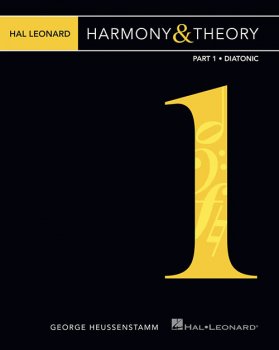Hal Leonard Harmony & Theory – Part 1: Diatonic

ilfsn | PDF + HiRes Image | 128MB
Series: Music Instruction
Publisher: Hal Leonard
Format: Softcover
Author: George Heussenstamm
George Heussenstamm, composer of more than 85 published works and author of The Norton Manual of Music Notation, taught college-level theory for several decades. Unable to find what he considered a suitable text, he wrote his own, honing it through practical classroom experience. It is now published for the first time as Hal Leonard Harmony & Theory.
This book is designed for anyone wishing to expand their knowledge of music theory, whether beginner or more advanced. The first two chapters deal with music fundamentals, and may be skipped by those with music reading experience. Each chapter contains many examples that clearly illustrate the concepts presented. Written exercises at the end of each chapter allow the reader to test and apply their knowledge.
Topics include: basic music-reading instruction; triads in root position; triads in inversion; cadences; non-harmonic tones; the dominant seventh chord; other seventh chords; and more.
